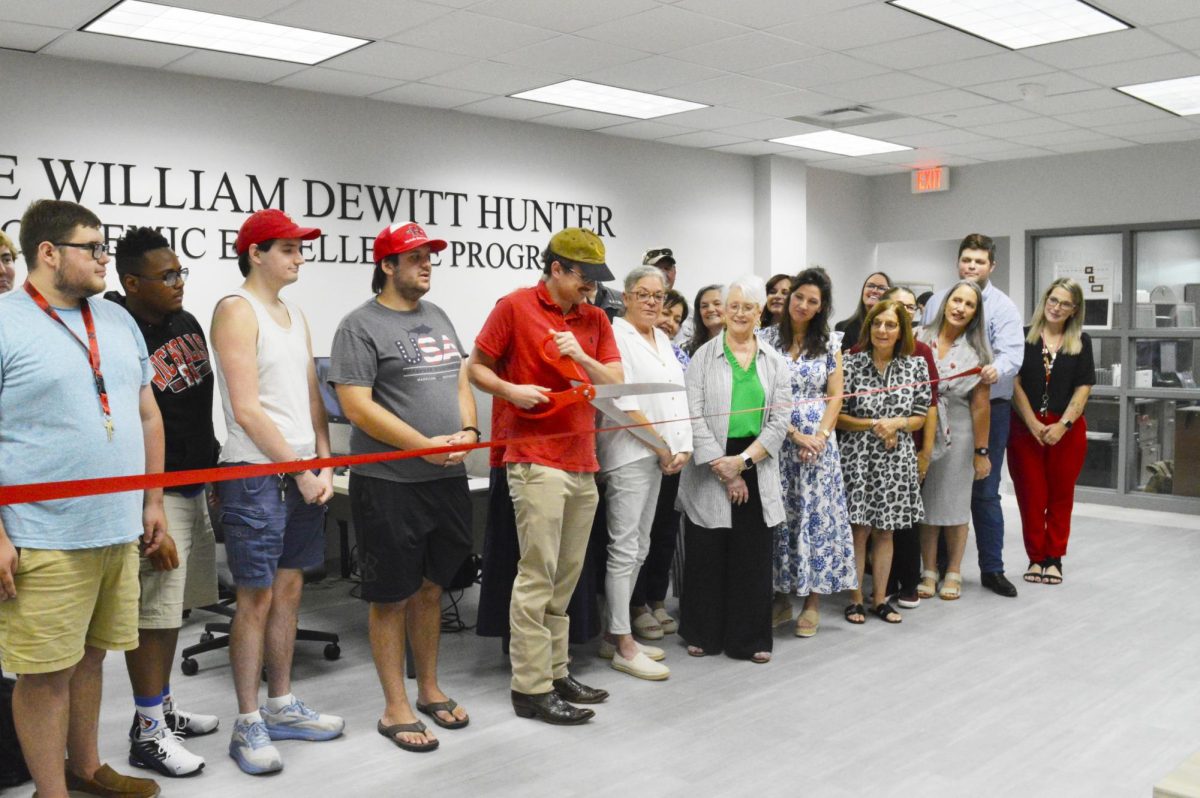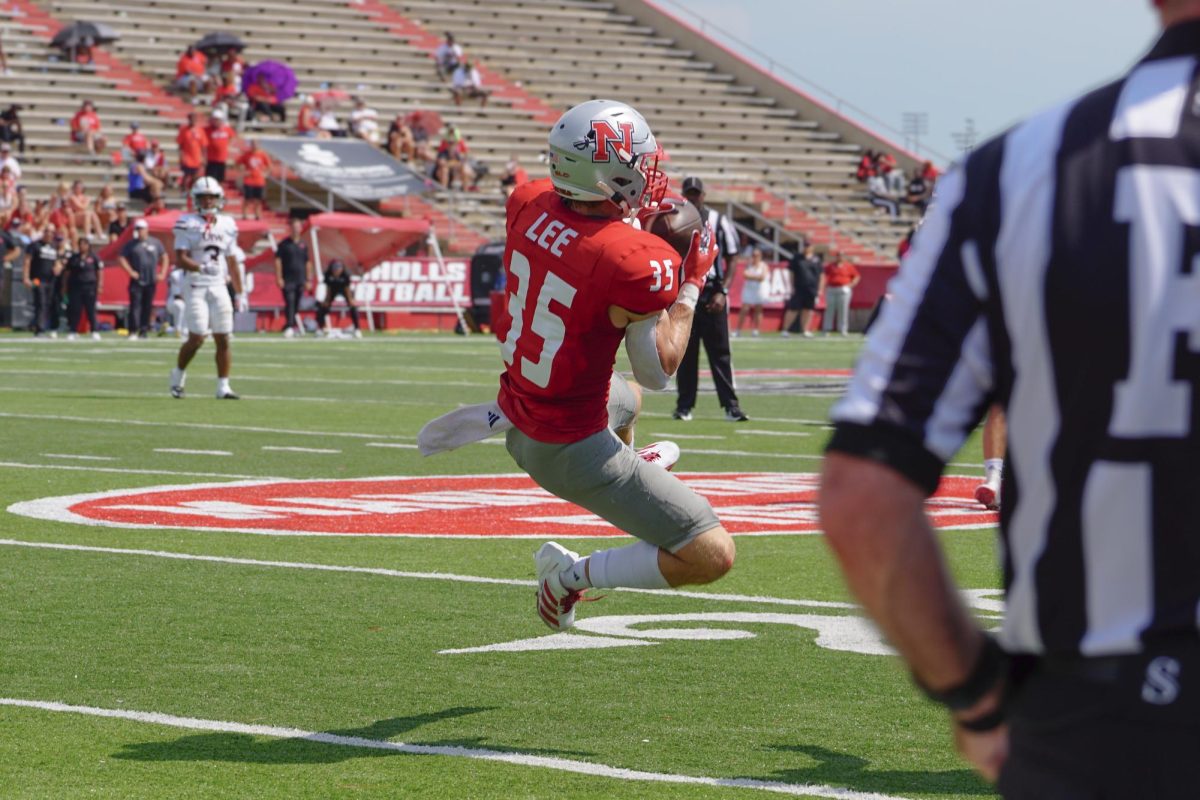The University President and Athletic Department said they are not surprised by the recent South Louisiana Economic Council study reporting that Nicholls State’s athletic spending placed last in the Southland Conference and that Nicholls athletics has an $8.4 million annual economic impact on the seven-parish region.According to the study, the 2003 athletic expenditures at Nicholls ranked 117th out of 120 NCAA Division I-AA schools and trailed the Southland Conference average by $1.727 million. Four other schools within the state or Southland Conference without a football program spent more dollars on athletics than Nicholls’ $3,161,081 expenditures. Nicholls’ spending for the same time period ranked last among South Conference schools for baseball, football, women’s basketball, women’s golf, soccer, softball and volleyball.
Each year SLEC conducts an economic impact study on an aspect of the region. Charles Gaiennie, owner of the W.L. Gaiennie Company, which was commissioned to conduct the study, said Nicholls athletics was chosen for the study, because Vic Lafont, SLEC executive director, and SLEC are heavily involved in supporting athletics, especially at Nicholls.
“I don’t believe the University sat down before this and really reviewed the nature of our athletic program, how much money we’re putting into it or what we’re receiving in terms of donations from friends or affiliated organizations that support athletics,” University President Stephen Hulbert said. “This study was a perfect first step. It rather clearly evidences that we’re not keeping pace with many of the other institutions.”
Hulbert said his plans are to engage the University community in several conversations about the nature of intercollegiate athletics and club sports in search of a solution.
Robert Bernardi, director of athletics, said: “This is just part of the challenge to continue to try to increase revenue. It is a complex problem, not just one or two issues, but a multitude of various ones such as fan attendance, community support and even enrollment has an impact on the budget.”
Hulbert said the University is allowed to allocate a certain amount of state dollars in support of intercollegiate athletics, which is determined by formula by the Board of Regents. Legislation allows each school to transfer $125,000 over the cap amount of the University’s budget that can be transferred to support athletics for gender equity programs. According to the study, Nicholls received $2,271,662 of the allowable $2,353,839 cap and did not receive any of the allowable $125,000 gender equity money.
“We can’t increase it (funding) beyond the formula, and even if we have room to grow in terms of the amount of money we can allocate, it has to come from somewhere else in the University,” Hulbert said. “It’s not an easy problem to solve.”
Hulbert said one of the problems is that Nicholls is competing against Southland Conference institutions that are larger than Nicholls. Larger schools have more students along with their families and friends to attend athletic events and get a larger appropriation from the state, he said.
Nicholls ticket sales for the 2002-2003 fiscal year totaled $92,901, ranking Nicholls 179 of 209 Division I schools and 54 of 69 Division I-AA schools.
Bernardi said the funding shortage particularly puts athletics at a disadvantage in recruiting. “We don’t have the resources to recruit the type of student-athletes we need,” he said. “Teams typically with the best players win, and to get players we are not at the same funding level (as competing schools).”
The study also discusses suggested improvements for all athletic facilities, including upgrades to the seating and floor of Stopher Gymnasium, the installation of a synthetic turf field for John L. Guidry Stadium and construction of a soccer facility and an academic center.
Those who prepared the survey, Gaiennie, Matthew Gresham and the W.L. Gaiennie Company, also included recommendations to the department including creating a marketing and promotions position for the Department of Athletics or Nicholls as a whole, conducting a capital campaign for athletics, partnering with the City of Thibodaux and parish to enhance athletic facilities and modernizing priority seating arrangements.
Hulbert said what level of support the University can find for athletics needs to be discussed before a capital campaign can be planned. He said athletics was not one of the items that came forward as a major priority in the recent capital campaign for the University. Out of the total $32.7 million committed to the campaign, athletic scholarships received a total commitment of $11,600 and $157,651 was pledged toward athletics in general.
“It is very simplistic to say to do a capital campaign targeted for athletics, but there may be other things within the University that are equally pressing or even more pressing,” Hulbert said. “We have to pick priorities. While I love athletics, my responsibility is Nicholls State University, and athletics is one aspect of a very large university.”
According to the study, direct spending for the 2003 fiscal year associated with Nicholls athletics totaled $6.7 million in the seven-parish region of Terrebonne, Lafourche, Assumption, St. Mary, St. James, St. John and St. Charles. Over five years, $38.1 million is contributed to the region by Nicholls athletics and associated programs.
It is estimated that 322 students would not otherwise come to Nicholls if there were no athletics program, and 81 current residents would leave the area by 2007.
R. Morris Coats, finance and economics professor, and Kevin Chris Cox, management and marketing department head, prepared the economic impact portion of the study.
Bonnie Lafont, director of grants and economic development for the city of Thibodaux, said the report is very reflective of the importance athletics is to the community.
“We have a gold mine with having the University here, and athletic programs add to the value of the University and community.” Lafont said Thibodaux is a city willing to discuss the study’s results and proposed recommendations.
Editor’s note: A more detailed, in-depth series on this study will appear in The Nicholls Worth in the fall.







